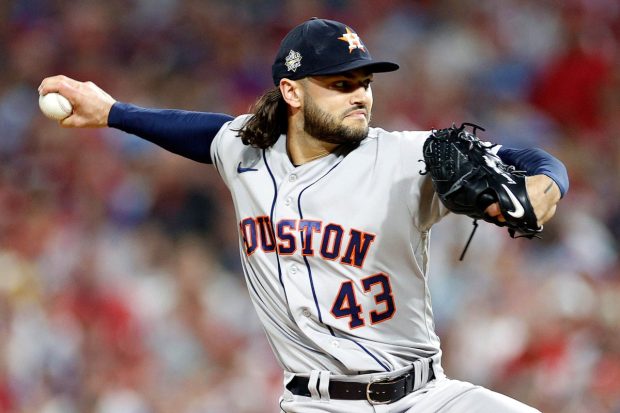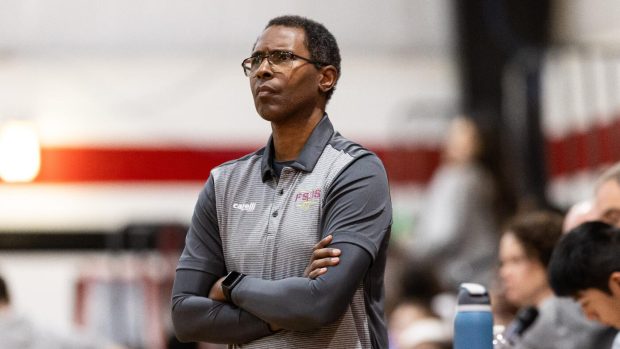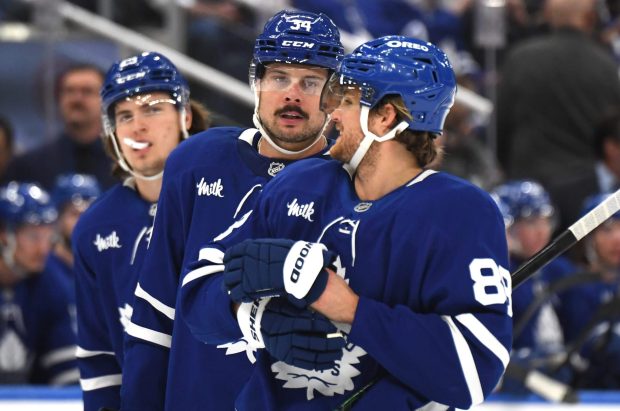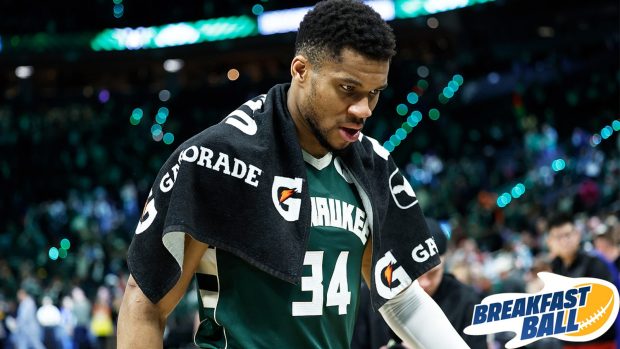

The San Francisco 49ers plan to sign six undrafted rookies this week, including a sturdy, 1,000-yard rusher, a defensive tackle who bench presses 405 pounds and a receiver with a condor-like wingspan.
I texted NFL evaluators, consulted with Dane Brugler’s “The Beast” and spoke to the agents of most of the prospects below before compiling this ranking, which takes a stab at the prospects’ chances of making the season-opening roster or practice squad.
Advertisement
WR Isaiah Neyor, Nebraska
“Arguably the most physically gifted athlete in the 2025 NFL Draft class.”
That’s Brugler’s assessment of Neyor, who measured 6-foot-4, 218 pounds with 34 1/2 -inch arms, and who ran his 40-yard dash in 4.4 seconds at the NFL combine. Not only is Neyor’s 83 ½-inch wingspan greater than any wide receiver in this year’s draft class, it’s larger than any of the tight ends who were drafted.
We bounced the 49ers’ undrafted list off of two other NFL evaluators, and both put Neyor at the top of the list, too. So why did Brugler rate him as merely a sixth-round pick and why did he fall out of the draft altogether?
Brugler has a prominent “but” in his takeaway: “But aggressive defenders can negate his physical advantages and the inconsistencies in his game make him a better talent than a football player.”
Despite his impressive physical traits, Neyor’s college statistics were merely OK. He finished last season with 455 receiving yards, averaged 13.4 yards per catch and caught 54 percent of the passes thrown in his direction. For perspective, the four receivers the 49ers have drafted over the past two years — Ricky Pearsall, Jacob Cowing, Jordan Watkins and Junior Bergen — all have catch percentages of 70 percent or higher.
To underscore Brugler’s observation, even though Neyor has tremendous size, speed and very long arms, he caught only 29.4 percent of his contested targets last season.
Still, receivers with his physical gifts are rare. In the last 10 years, only three other wideouts who weigh 218 pounds or more have run their 40 in 4.4 seconds or faster: Chase Claypool, DK Metcalf and Xavier Legette. Neyor seems like a low-stakes gamble for a potentially big payoff.
RB Corey Kiner, Cincinnati
Kiner might be the opposite of Neyor in that his athletic gifts are unimpressive, but his production jumps out. He had more than 1,000 rushing yards in each of the last two seasons and also didn’t miss a game in that span, which is noteworthy considering the 49ers’ recent injury history at running back.
Advertisement
Kiner likely fell out of the draft due to his size (5-foot-8 1/2, 209 pounds), his lack of breakaway speed (4.57 in the 40) and the fact this was an exceptionally deep draft class at running back. Twenty-five were selected, the most in the last five years.
Kiner was an easy evaluation for the 49ers because he played in a zone-blocking offense with the Bearcats and stood out due to his patient running style and ability to find open lanes. In that way, he’s a lot like last year’s undrafted running back pick-up, Cody Schrader, whom the Los Angeles Rams swiped off of waivers following cut-down day.
Kiner also gets high marks for his balance and breaking tackles. Of his 1,153 rushing yards last season, 841 came after contact.
DT Sebastian Valdez, Washington
Like fourth-round pick C.J. West, Valdez was knocked for his lack of length (6-foot-3 with 31 1/4-inch arms) and meager pass-rush production (two sacks and 19 quarterback pressures in 2024). However, he might have been playing out of position at times at Washington, which used him a lot at nose tackle and took him off the field on passing downs.
The 49ers eye him as more of a three-technique tackle, someone who can shoot through gaps and muddy the offensive backfield. Valdez has good quickness and excellent power. He bench pressed 225 pounds 34 times at Washington’s pro day and benched as much as 405 pounds last year. He showed that strength-quickness combination in the Huskies’ 31-19 win over UCLA last season, finishing with a sack and nine quarterback pressures.
Roughly 20 teams were trying to sign Valdez as the draft wound down and he’d committed to the Miami Dolphins — who’d had him on a 30 visit — with around eight picks to go. When the Dolphins added Georgia Tech defensive tackle Zeek Biggers at pick No. 253, he changed his mind and the 49ers rose to the top of his list.
Advertisement
CB/NCB Jakob Robinson, BYU
There was some familiarity with this signing in that new cornerbacks coach Ray Brown knew Robinson from Utah State, which is where Robinson played before transferring to BYU.
Robinson lined up both on the outside and at nickel cornerback for the Cougars. His size — 5-10, 183 pounds — suggests that nickel might be his best spot with the 49ers.
Robinson was fast at his pro day, running the 40 in 4.35 seconds. He also is known as a ball hawk, tallying 11 interceptions in four seasons at BYU, including seven – with one touchdown return — in the last two seasons. Opposing quarterbacks had a lowly 61.1 passer rating when targeting Robinson in 2024.
The 49ers have a crowded cornerback room this summer after taking Upton Stout in the third round last week. But only two players at the position — Deommodore Lenoir and Renardo Green — are shoo-ins for roster spots.
LB Stone Blanton, Mississippi State
Blanton wasn’t prominent during the run-up to the draft because he was recovering from a turf toe injury and never ran a 40 in front of NFL scouts. His perceived lack of speed was a big reason he wasn’t drafted.
Still, he had a career-high 125 tackles last season, the second most in the SEC and the ninth-most in the nation. Pro Football Focus, meanwhile, gave him a strong 86.4 grade on run defense.
The 49ers attended his pro day (he did the vertical jump, the short shuttle and three-cone drill) and he had Zoom calls with the team. Defensive assistant K.J. Wright, who played at Mississippi State, was an advocate. The Rams, Vikings, Texans, Saints and Browns were also interested in signing Blanton.
G/C Drew Moss, Colorado State
The 49ers want interior offensive linemen who move well laterally and who can change direction quickly. Because of that, the short shuttle drill — in which a prospect runs five yards, changes direction, runs 10 yards, changes direction again, and then runs the final five yards — often stands out for the team’s guards and centers.
Advertisement
Last year, for example, Dominick Puni’s short shuttle was 4.40 seconds, the third-fastest among offensive linemen at the 2024 combine. Sixth-round pick Jarrett Kington’s was 4.47 seconds.
Moss and Iowa guard Connor Colby, the second of the 49ers’ three seventh-round picks, weren’t quite as fast. Both ran 4.58-second shuttles at their pro days. Still, that’s a relatively good score and speaks to their ability to move. Both played in zone-blocking schemes in college.
Moss, who measured 6-foot-3, 303 pounds, lined up at right tackle during his first three college seasons before playing right guard in 2024. The 49ers are looking at him as a guard or center.
(Photo: Brooke Sutton / Getty Images)
This news was originally published on this post .









Be the first to leave a comment